
Compare the Hyundai IONIQ 9
Compare the Hyundai IONIQ 9

Hyundai IONIQ 9 vs the Competition
The Hyundai IONIQ 9 rethinks what a three-row electric SUV should be. Instead of overcomplicating the design, it focuses on usable space, smooth power delivery, and smart tech that stays out of the way. Every element serves a purpose, from the relaxed ride quality to the clean cabin layout. It makes everyday driving easier, and long trips quieter, quicker, and more comfortable.
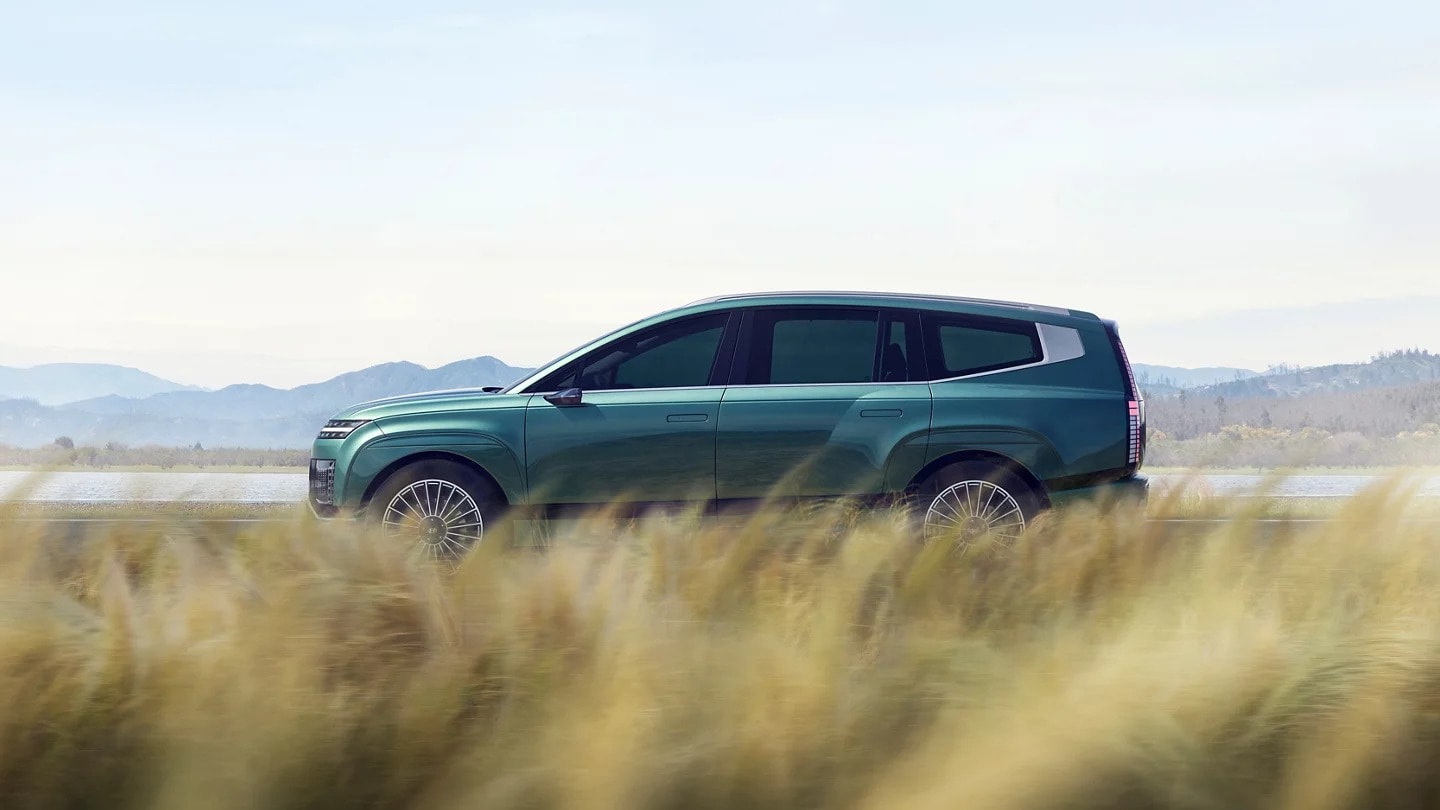
Performance Capabilities and Range
The Hyundai IONIQ 9 is calibrated for everyday drivability with plenty of range and composure. The dual-motor setup delivers strong, steady power without lurching off the line or burning through battery life. Even the standard configuration pushes past 300 miles, while the extended-range model edges up to 336 miles on a full charge. That's without sacrificing ride comfort or storage space.
Rivian's R1S has a bold design with a quad-motor layout, but the extra weight adds drag and reduces efficiency. Upgraded models get over 400 miles, but the number shrinks fast under real-world conditions. The added complexity doesn't do much for most drivers around Everett, where snow tires matter more than rock crawl modes.
The 800V Hyundai charging system replenishes the battery faster using a 350-kW charger at public stations, reaching 80 percent in 24 minutes. Although the Rivian has a solid charging speed, it lags under similar conditions.
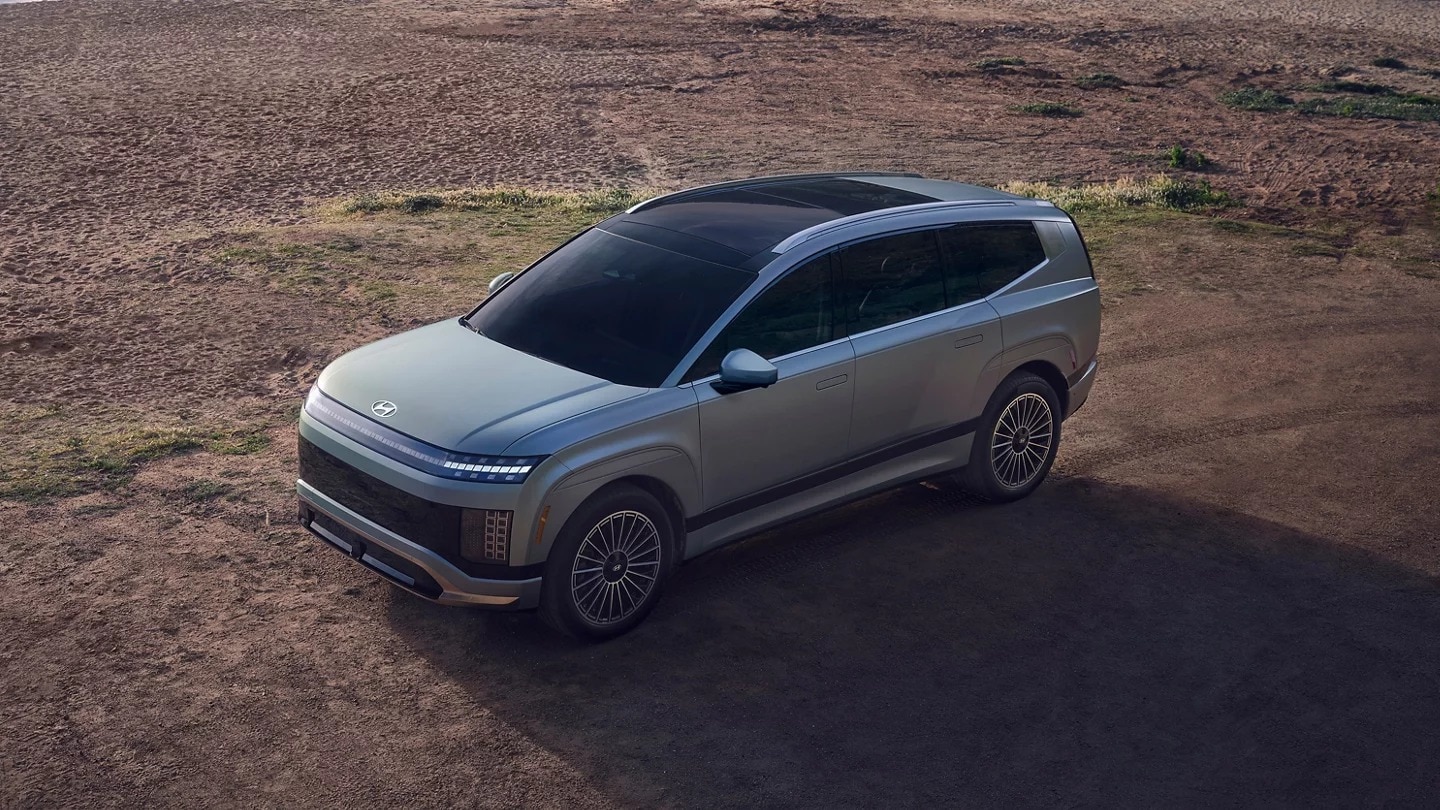
Drive Feel and On-Road Handling
The Hyundai IONIQ 9 tracks cleanly across highway stretches and low-speed zones, gliding over ruts without floating or tilting. Steering feels centered and direct, with none of the numbness that plagues some heavier EVs. Weight distribution and suspension geometry work together to keep body roll in check, even on winding roads.
The Rivian R1S handles well, but ride quality is stiff. Though they may dull steering feedback, its larger tires and air suspensions make rough surfaces feel smooth. Maneuvering in and out of tight spaces feels clunky, especially in city traffic.
Hyundai's setup prioritizes responsiveness without overcorrecting. Regenerative braking feels natural, not grabby. There's enough feedback to keep the drive engaging without fatiguing drivers in traffic-heavy zones near Seattle.
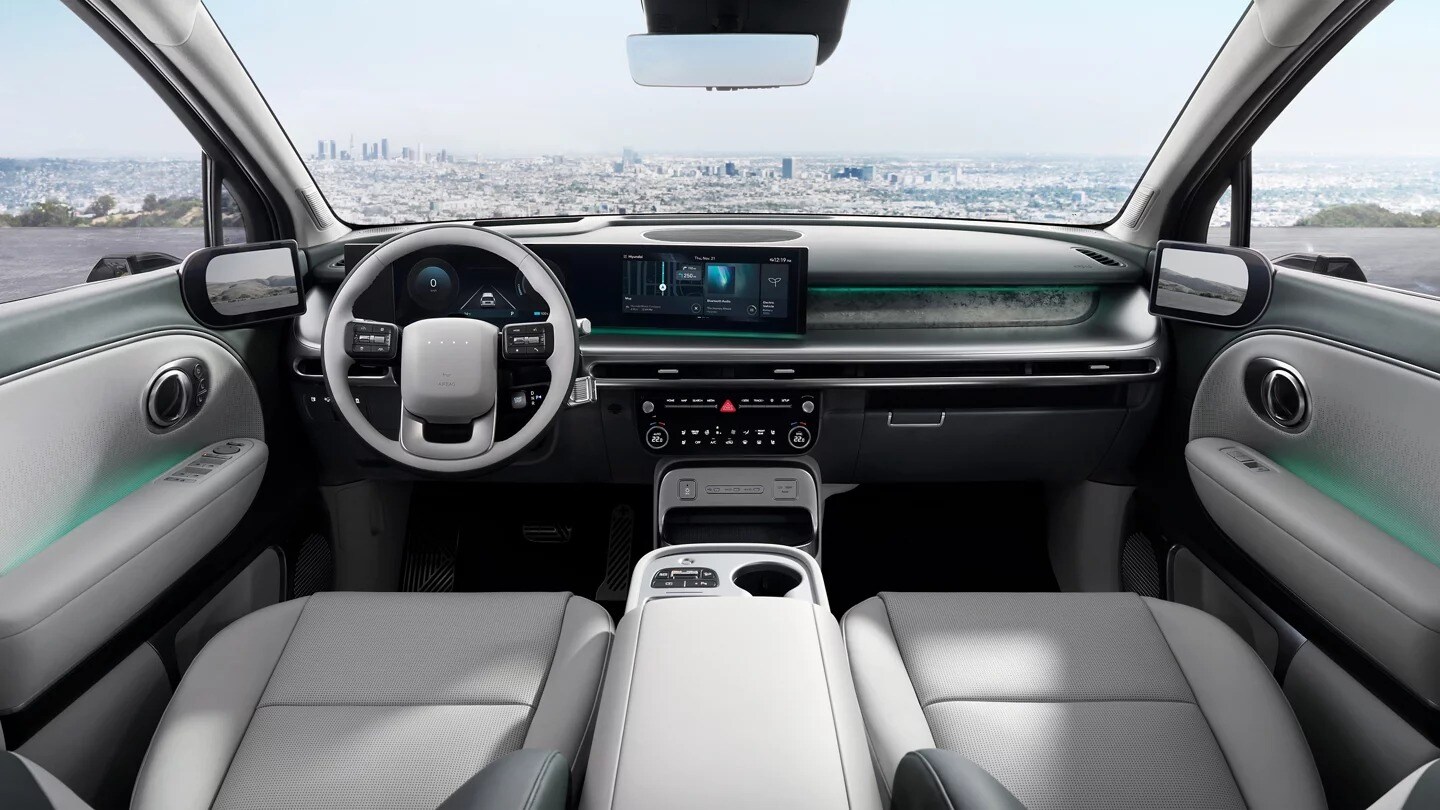
Notable Technology Features
Inside the IONIQ 9, the panoramic curved screen grabs attention without dominating the cabin. It layers the gauge cluster and infotainment display into one seamless panel, avoiding the dashboard "tablet" look. Touchpoints feel familiar, and voice controls actually work on the first try.
Rear passengers don't get left behind. USB-C ports and customizable ambient lighting reach all the way to the third row. Menus load quickly. Navigation responds to traffic shifts in real time. Software updates happen quietly in the background.
The Rivian R1S packs in tech-some of it brilliant, some overbuilt. Gear Guard security features and off-road telemetry are impressive but irrelevant for most urban drivers. The interface has function-heavy overlays that slow down simple tasks like changing music or using the navigation system.
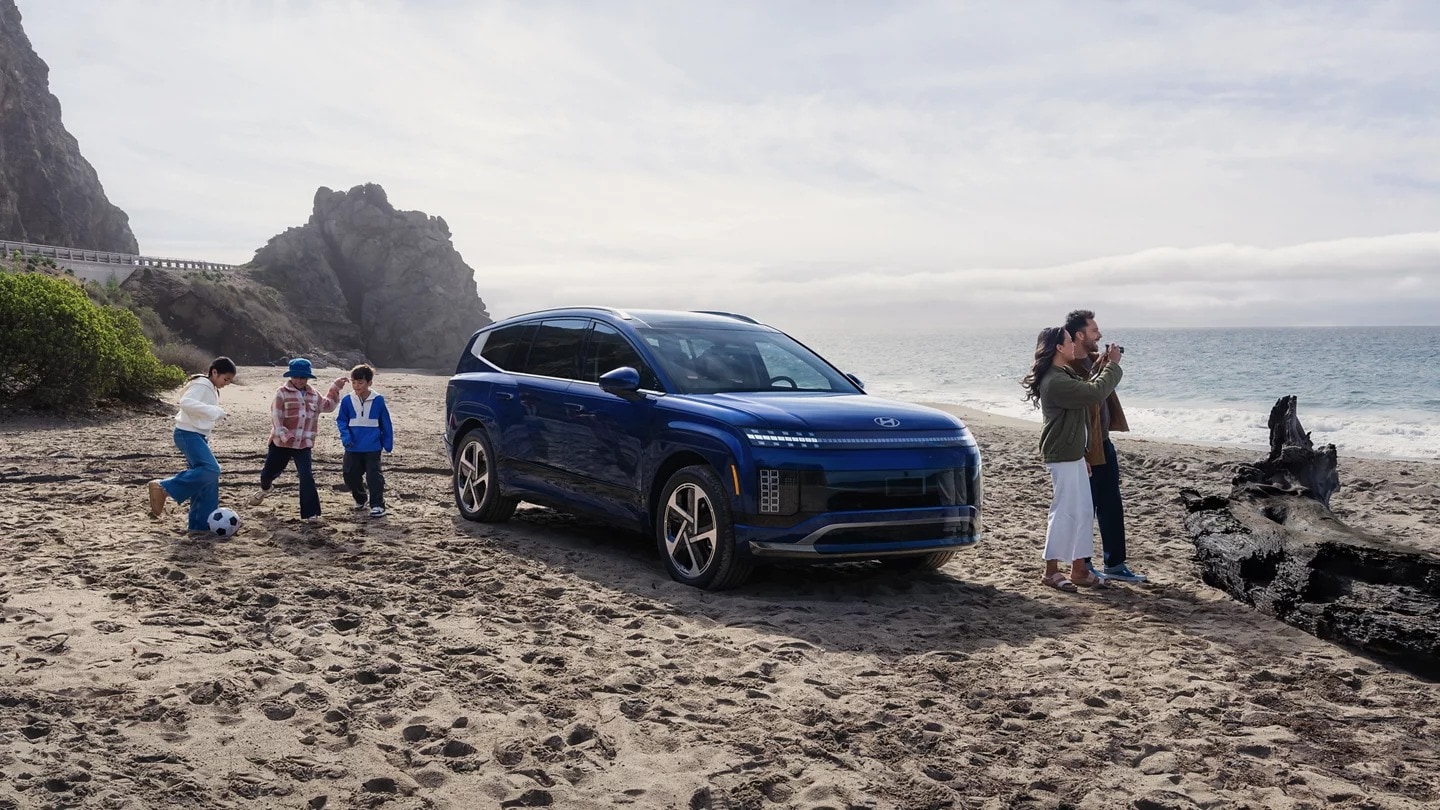
Safety and Driver-Assists
Hyundai doesn't reserve its best driver-assist tools in premium trims. The driver-assist package, Highway Driving Assist 2, is standard, staying active through curves and lane changes, supporting smooth merges, and maintaining safe distances in stop-and-go traffic. Additional systems include
- Rear cross-traffic alerts
- Emergency braking intervention
- Blind-spot view monitors
- Parking collision avoidance
The Rivian R1S has proprietary hands-free highway software but is limited in scope. System confidence drops in low-visibility conditions, and manual corrections are more frequent in heavy rain or poorly marked roads.
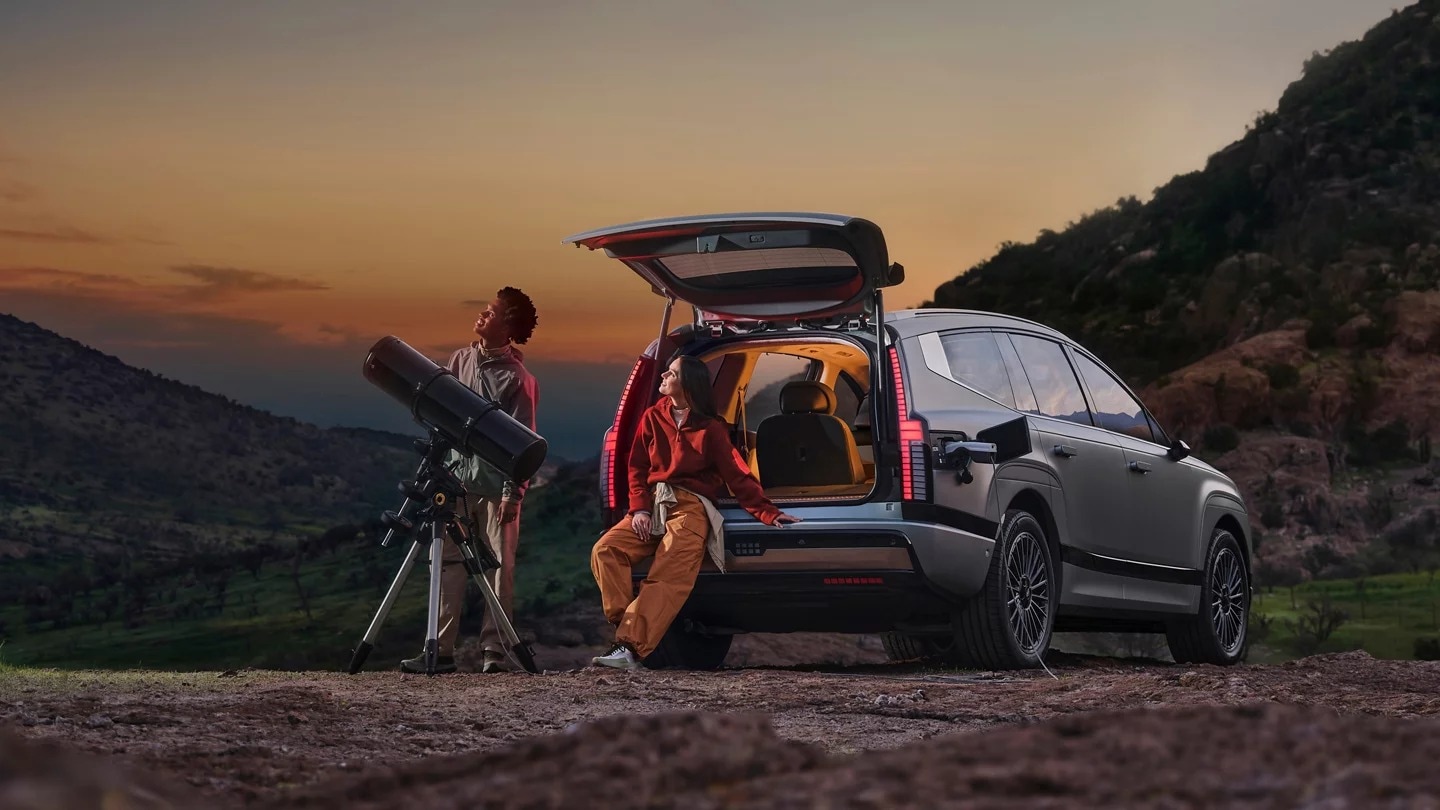
Cost of Ownership
The Hyundai IONIQ 9 has a starting price of $58,955 MSRP for a dual-motor all-wheel drive (AWD) configuration with fast-charging capabilities and a suite of technology and safety features. It's also covered by the Hyundai warranty and complimentary scheduled maintenance for the first few years.
Rivian's R1S starts at $76,900 MSRP, with most buyers configuring theirs past that threshold. Extended battery packs, quad-motor setups, and optional accessories climb toward six figures quickly. Convenient maintenance access is limited, and there are fewer dedicated service centers in Washington state.
With the Hyundai IONIQ 9, range, features, and comfort amenities are included in the starting price, not costly upgrades.
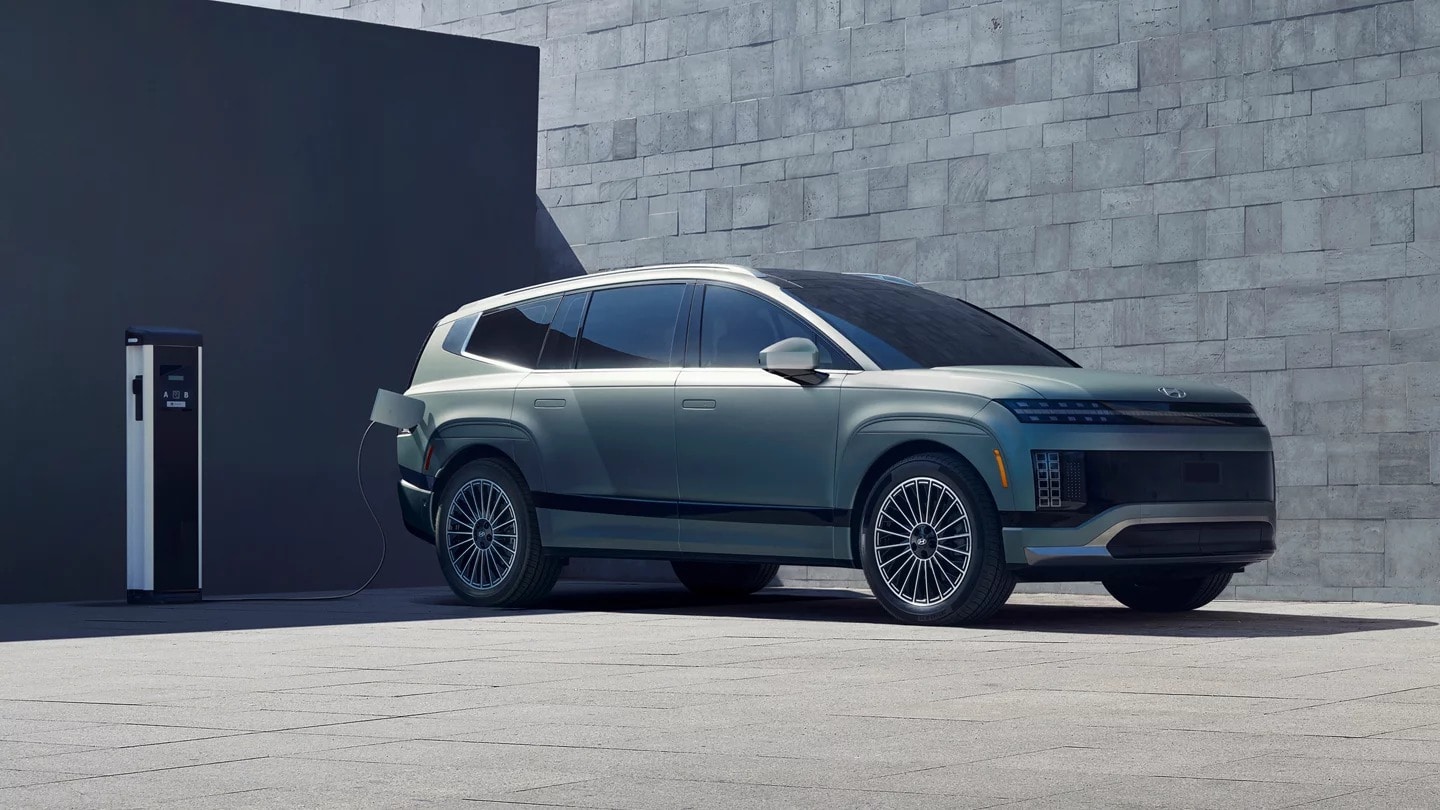
Hyundai IONIQ 9 vs Kia EV9
The Hyundai IONIQ 9 gets up to 335 miles of range, charges faster, and natively supports Tesla Superchargers. It has more cargo space, a larger battery, UV-C phone storage, and 100W USB-C ports. The Kia EV9 model gets up to 280 miles and accelerates faster in GT trims with lower efficiency and charging compatibility.
Final Thoughts: More Everett Drivers Choose the Hyundai IONIQ 9
The Hyundai IONIQ 9 handles everyday driving better than the Rivian R1S and Kia EV9. It charges quicker, drives smoother, and makes better use of space and technology with a dialed-in layout that feels dialed-in, not overdone.
Test Drive the New Hyundai IONIQ 9
Read more about how the Hyundai IONIQ 9 compares to the Rivian R1S and Kia EV9, browse new inventory, and explore lease and finance options online from the comfort of home near Seattle. Visit Lee Johnson Hyundai of Everett today to explore the new Hyundai IONIQ 9 lineup and take a test drive.
How Can We Help?
* Indicates a required field
-
Lee Johnson Hyundai of Everett
7800 Evergreen Way
Everett, WA 98203
- Sales: (425) 258-9100

